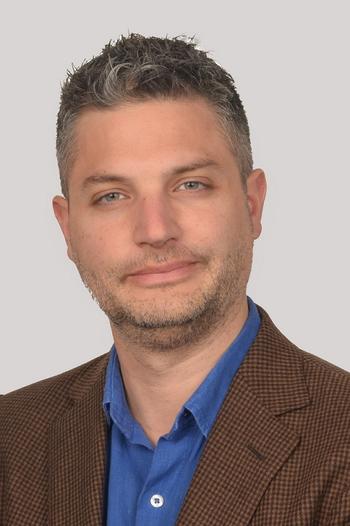Spyros Petritakis (The University of Crete)
Early Career Fellow in Research Area 3: "Future Perfect"
April–September 2022
Cosmic Monasteries: Expanding the Delphic Experience throughout the 1920s and early 1930s
This project pursues the transnational circulation of the "Delphic Idea" and its ensuing transformations through socio-political and cultural processes during the late 1920s and early 1930s in a global perspective. The "Delphic Idea", the zoning and use of the archaeological site of Delphi as a centre for reviving the ancient Pythian Games, has been unanimously credited to Angelos Sikelianos, although many scholars have recently also pointed out Eva Palmer-Sikelianos's contribution not only to the fruition of this project but also to its inception. While the Delphic Festival of 1927 has often been discussed in relation to other air-open festivals in Europe and the United States, this research will trace how the engagement with the Delphic endeavour became global and generated specific episodes of transcultural modes of artistic representation, whose echo rebounded back in Greece during the preparations of the second Delphi Festival of 1930. Eva Palmer-Sikelianos's role as mediator enables us to map the networking of these cultural entanglements and view the bonds with her interlocutors through the multiple lenses of theosophy, friendship, travel, art, and politics. Belonging to an intellectual generation that felt estranged from the United States and its rapid industrialization, Eva Palmer-Sikelianos gradually lost herself in Europe, and in Greece in specific, where she appropriated countercultural concepts and invented performing techniques of living in opposition to modern times. When she travelled from Greece to the United States in the late 1920s, she created in New York the "Ashram", - meaning a spiritual monastery in Indian religions - a cultural venue that brought together Mexican revolutionaries, Indian pacifists, Theosophists, and Marxists, all of whom embraced the Delphic idea as a synonym for global freedom and international brotherhood. A global religious canon (the Delphic idea) is emerging. The project examines essays, art criticism and neo-religious texts that played a role in the worldwide dissemination of the Delphic idea. It will show that "Ashram" is only a pivotal node in a wide-ranging network that was informed by the manifold activities of this movement. Mapping out these global transfers and transnational entanglements, Cosmic Monasteries sets out to explore the intertextual and intermedial connections between the performance of Aeschylus's Prometheus Bound at Delphi in 1927 and its transforming variations by actors of the Ashram movement, and critically reflects on the ideological presuppositions that informed these various modes of representation.
Spyros Petritakis received his PhD in art history from the University of Crete in Greece. He graduated from the Department of History and Archaeology of the University of Ioannina and obtained a master's degree in History of Art from the University of Crete. He has also pursued music theory, piano and composition studies. He has participated in conferences in Greece and abroad, and published articles in peer-reviewed journals as well as chapters in anthologies. In 2013 he participated in the International Conference "Enchanted Modernities: Theosophy and the Arts in the Modern World." In his thesis, Colour-Music Theories Among Symbolist and Theosophical Artists and Intellectuals, 1880-1914, he examines the way artists wove together theosophical and spiritual ideas with (pseudo)scientific and musical theories on sonorous and luminous vibrations against the background of the rise of esoteric movements in the late 19th century. His research interests and publications include the interrelations between painting and music, as well as the relationship between modern esotericism, art and politics, with a particular emphasis on the Symbolist movement at the end of the nineteenth century. Some of the titles of his publications are: "Quand le miroir devient lampion : aspects de la réception de l’œuvre tardive de Nikolaus Gysis entre Athènes et Munich (2016)", "Rudolf Steiner's Engagement with Contemporary Artists' Groups: Art-theoretical Discourse in the Anthroposophical Milieu in Germany in the early 20th century (2018)", "The 'Figure in the Carpet': M. K. Čiurlionis and the Synthesis of the Arts (2018)" and "George Frederic Watts's 'Mesmeric Dolls': Music and Theosophy in the Painter's Late Works (forthcoming 2022)."
